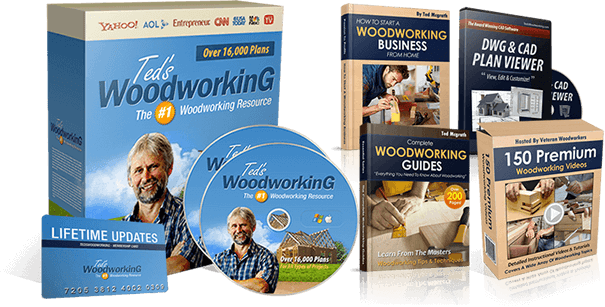Best Woods and Materials for Desktops: What Are Desks Made Of?
Choosing the right material for your desktop is crucial as it directly impacts the workspace’s aesthetics, durability, and functionality. Whether setting up a home office, corporate environment, or creative studio, the desk material plays a significant role in shaping the room’s look and feel. From the rich textures of hardwood to the sleek finishes of engineered materials, each option offers distinct advantages and considerations. This guide explores the best wood for desktops, compares various materials, and provides insights to help you make an informed decision that suits your needs and style preferences.

What Are Desks Made Of?
Desks are crafted from a variety of materials, chosen for their unique properties and suitability for different environments. These range from traditional woods to modern composites and metals, each offering a distinct aesthetic and functional advantage.
Common Desk Materials and Their Uses
Evaluating desk materials based on their characteristics can help you select the right one for your needs. Here are some of the most common materials used in desk construction:
Wood
- Description: A timeless choice offering durability, warmth, and natural beauty.
- Popular Types: Hardwoods like oak and maple for strength; softwoods and engineered woods for affordability.
- Best For: Home offices, corporate environments, and creative studios.
Metal
- Description: Known for its industrial appeal, metal is durable and easy to clean.
- Pros: Sleek and sturdy; pairs well with other materials like wood or glass.
- Best For: Modern and minimalist designs.
Glass
- Description: Offers a contemporary and elegant look.
- Pros: Visually appealing, pairs well with metal frames.
- Cons: Requires regular cleaning and is prone to fingerprints.
- Best For: Stylish modern offices.
Melamine
- Description: Engineered material with a wide range of finishes.
- Pros: Scratch- and stain-resistant, budget-friendly.
- Cons: Less durable than solid wood.
- Best For: Affordable and practical workspaces.
Bamboo
- Description: Eco-friendly, sustainable, and modern.
- Pros: Lightweight, durable, and renewable.
- Cons: Limited color range.
- Best For: Green-conscious consumers and modern setups.

Comparison Table: Types of Wood for Desktops
This table compares popular wood types based on key factors such as durability, appearance, and sustainability:
| Wood Type | Durability | Appearance | Workability | Maintenance | Sustainability | Pros | Cons |
|---|---|---|---|---|---|---|---|
| Oak | High | Traditional | Easy | Moderate | High | Durable, rich texture | Expensive |
| Maple | Very High | Light, smooth | Moderate | Low | Moderate | Strong, light-colored | Can be heavy |
| Walnut | Medium | Dark, elegant | Moderate | High | Moderate | Luxurious, unique grain | Expensive |
| Cherry | High | Reddish-brown | Easy | Moderate | High | Warm tones, ages beautifully | Prone to scratches |
| Rubberwood | Medium | Light, eco-friendly | Easy | Low | High | Affordable, sustainable | Moderate durability |
| Bamboo | High | Modern, sleek | Easy | Low | Very High | Eco-friendly, durable | Limited color range |
| Acacia | High | Vibrant, unique grain | Moderate | Low | High | Water-resistant, rustic charm | Heavy |
| Messmate | Medium | Attractive mixed shades | Moderate | Moderate | High | Affordable, versatile | Requires regular sealing |
Best Wood for Desktops
Several wood types stand out for their exceptional qualities:
- Oak: Renowned for its strength and rich texture; perfect for both home and office use.
- Maple: Offers a smooth, light-colored surface ideal for precise tasks.
- Walnut: Known for its dark, luxurious finish; a statement piece for executive desks.
- Cherry: Loved for its reddish tones and aging patina; ideal for high-end furniture.
- Acacia: Durable with striking grains; excellent for rustic or unique designs.
- Bamboo: Sustainable and modern; a lightweight, eco-friendly option.
Bamboo vs. Solid Wood
Pros of Bamboo:
- Eco-friendly and sustainable.
- Lightweight and cost-effective.
- Durable and modern in appearance.
Cons of Bamboo:
- Limited aesthetic variety.
- May not last as long as solid hardwoods.
Pros of Solid Wood:
- Offers a wide range of colors and grain patterns.
- Highly durable and long-lasting.
Cons of Solid Wood:
- Heavier and more expensive.
- Requires regular maintenance.
Start Your Next Project With Teds’ Archive Of 16,000 Plans!
Instant access to all 16,000 woodworking plans with step-by-step details, photos, materials lists and more
Monthly free plans with lifetime membership access – No renewals, recurring fees or other charges

Alternative Materials
- Melamine: Affordable and easy to maintain, though less durable than solid wood.
- Laminate: Budget-friendly and available in various designs, but susceptible to chipping over time.
Best Wood for Standing Desks
Standing desks require stability and durability. Top choices include:
- Oak: Heavy and stable, ideal for frequent adjustments.
- Maple: Smooth, modern, and durable.
- Walnut: Luxurious yet functional for executive setups.
How Desk Materials Affect Ergonomics
- Smoothness: Enhances ease of movement for peripherals.
- Stability: Prevents wobbling; essential for standing desks.
- Weight: Heavier materials ensure stability but are harder to move.
Tips for Choosing the Right Desktop Material
- Budget: Determine what you’re willing to spend.
- Durability: Match the material to the expected use.
- Aesthetics: Choose a wood type that complements your room.
- Maintenance: Consider how much effort you’re willing to invest.
How to Care for Wood Desks
- Dust Regularly: Use a soft cloth to prevent scratches.
- Polish Occasionally: Maintain the finish with wood-specific polish.
- Clean Gently: Avoid harsh chemicals; use mild soap and water.
- Prevent Damage: Protect from sunlight, moisture, and heavy impacts.

Conclusion
Selecting the right desktop material is an investment in both style and functionality. By understanding the benefits and drawbacks of various materials—from durable hardwoods to eco-friendly bamboo—you can create a workspace that aligns with your needs and preferences. Prioritize durability, aesthetics, and maintenance to make a choice that will serve you well for years to come.
